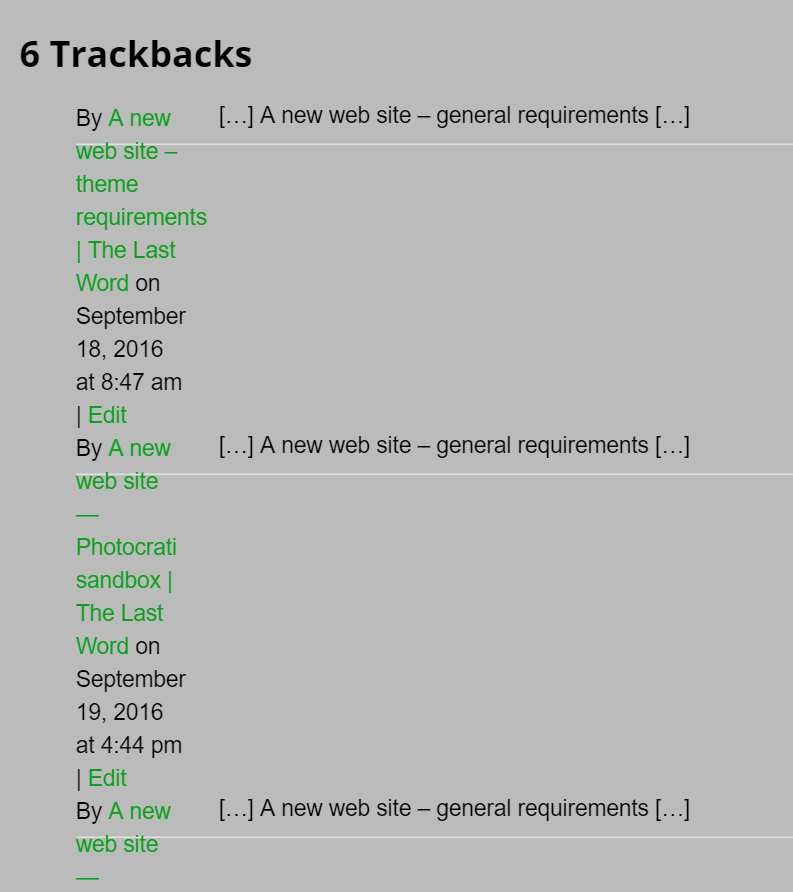This is a continuation of a series of posts about reworking my website into one that is entirely WordPress based. The series starts here:
I messed around with the Twenty Fourteen template, and decided that it would be easier to get the same look and feel for the blog sites and for the main gallery site if I used the same template for each. Since I seem to be deciding on Photocrati, I set up this site and my other site, The Bleeding Edge, using Photocrati. If you navigate on over there, you’ll see that it’s close, nut not identical. I’m pretty sure I can fix that once I figure out why the site name is displaying on the right side of the browser window, rather than in the center as it doesn with this blog.
I used the recommended 960 pixel width, which is wider than my previous blogs. I created a 960-pixel-wide banner image for the top, with a black area at the top over which the blog title, description, and top-level menu bar float. I tightened up on the line spacing.
I looked at the site on a cell phone, and, with the sidebar pushed to the bottom where many users will never see it (you can see this in action if you resize your browser widow down far enought to trigger the sidebar’s change in position), it’s hard to find your way around. In order to fix that, I decided to make the first page the user sees a summary of all the recent blog posts, rather than the full text. That does two things. First, it makes it more likely that the user will see the sidebar (can you still call it a sidebar when it’s at the bottom?), since the list of summaries is shorter than the full text. Second, if users are looking for something recent, they won’t have to go to the sidebar at all; a tap on the header of the summary brings up the whole post.
There’s only one vexing problem on this blog now. I use trackbacks to the initial post in a series to allow users to easy go to all the posts in that series. All they have to do is scroll down to the bottom of the post, and, below the comments area, they’ll see links to all of the posts in the series, and their titles. Unfortunately, the standard way that Photocrati presents the trackbacks makes it hard to read the titles:
I’d like the information that’s in the narrow column on the left to be full width, and the first line from the site suppressed entirely, or placed below the link/title. I’m sure that’s possible with a little CSS code, but I don’t know enough to write that code right now.
There are a few niggles. I don’t like the way that Photocrati formats the calendar in the sidebar anywhere near as well as Twenty Fourteen’s handling of it. But that’s small stuff. I do like the fact that Photocrati is far more configurable than Twenty Fourteen ever thought about being. Twenty Fourteen is kinda like a Mac. If you like the way it comes set up, it’s really great and simple. But if you want to change things past a certain point, it takes a lot of skill. Remember resedit?

Leave a Reply